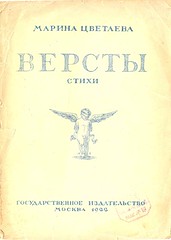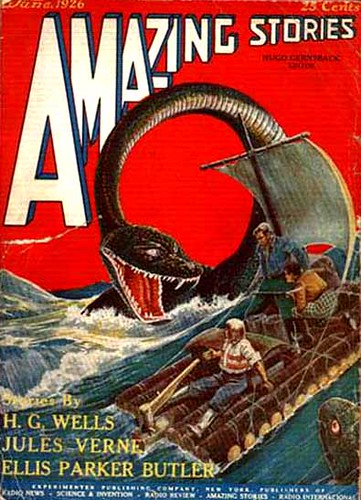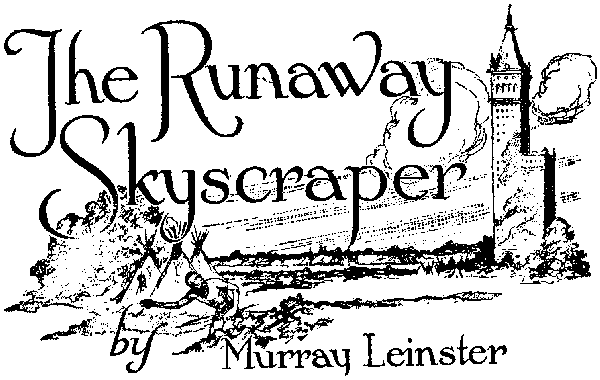1910s - Decade in SF&F: Reviews
|
THE WONDER TIMELINE: SF&F RETROSPECTIVE - Decade of 1910s Read other issues here ---------------------------------------------- .jpg) (illustration credit: Life magazine, 1951) "The Return of the King and the Downfall of the Lord of the Rings" (also known as "The Red Book of Westmarch") ...even better known as "The Hobbit" and "The Lord of the Rings": The early drafts and poems for that book appeared in 1915, providing the first glimpses into Tolkien's magical country of the Shire. Some epic poems and individual chapters of the "Silmarillion" took shape even earlier, so we can safely say that Tolkien was already "hooked" on Middle-Earth and adventures wherein way back in the 1910s, even though "The Hobbit" was not written down until 1935. (What's even more intriguing, Tolkien wanted to create a full-scale mythology for England itself - he felt that the English language lacked a really exciting set of myths, compared to other languages - a magical environment for other writers to explore and play in... Which is exactly what happened, if we look at the amount of epic fantasy stories set in Middle-earth during the last few decades).  J. R. R. Tolkien "The Hobbit, or, There and Back Again" (nv) (Lord Of The Rings; Middle-Earth) © 1937, Allen & Unwin poems also in - Oxford Poetry, 1915 Leeds University Verse, 1924 book: Allen & Unwin, 1937 --all time fantasy novel : 1987 Locus All-Time Poll /2 --fantasy novel (before 1990) : 1998 Locus All-Time Poll /2 --/ third place fantasy novel Much has been written about The Hobbit, from the influence of World War 1 on Tolkien's creation and development of Middle Earth, to literary and stylistic reviews. What is there left for one to say about this, the most charming of Tolkien's works and probably the entire genre? Though it was written for children, it appeals to the "Tookishness" in everyone: that deep down desire for more than just a comfortable hobbit hole - for adventure, and legends of long ago to wake up and invade breakfast. Who wouldn't want to be whisked away without even a handkerchief on some wild adventure? The storyline is not without its faults and a tendency towards "Deus Ex Machina" solutions, but they are carried off with such unapologetic aplomb that one cannot help enjoying every image and word. Tolkien's treatment of human emotion and motivation - filtered through his hobbit and dwarves - is without fault and honest: courage, greed, pride, resourcefulness, wit, humor, despair, love, loyalty and duty are all met and measured. Bilbo, who is so comfortable in his hobbit life that his neighbors don't even have to ask him what his opinions are, finds himself the odd one out among a pack of dwarves and with the awful label of burglar. He "lives up" to this challenge in ways which show his true character and surprises everyone. This book is truly one to curl up with on a February evening when it seems life has dulled into a cramped, damp hobbit-hole... it's always helpful to remember, you could be stuffed in a barrel and dumped in a river. (review by Rachel Abrams, Dark Roasted Blend)  (Not exactly the Shire from "The Hobbit", but this 1873 painting by Caille Pissaro nevertheless has that sparkling and innocent feel...) ---------------------------------------------- When the Middle-earth Trilogy and "Silmarillion" are just not enough...  J. R. R. Tolkien "The Book of Lost Tales. Parts I & II" (coll) (Middle-Earth History 2 & 3) © poems written in 1914-1918 book: Allen & Unwin, 1983-1984 --fantasy : 1985 Mythopoeic award --/ third place fantasy collection It was surprising to learn that a significant part of the Middle-Earth history, and a general feel and atmosphere of the Tolkien's world (including most poignant of his poems) - all were completed between 1914 to 1920, at the time when Tolkien was in love and when he experienced the terrors of war - but then, this is not really surprising, is it? I think that it is only proper - considering the intensity of feeling, freshness of emotion, vast scale of vistas and romanticism of the highest order that went into that "world-that-never-was-and always-is", the Middle-Earth. The true scale of Tolkien's mythology and its poetic qualities can only be appreciated outside the confines of a single trilogy (and definitely outside of Peter Jackson's movies, which seem to emphasize dark aspects of Middle-earth rather than its beautiful High Elves side). So, go ahead and get hooked on exploring in depth the epic history and the mysterious knowledge in the "Silmarillion" and the "Books of Lost Tales"; after all, this is how Middle-earth was originally intended to be experienced - better than in 3-D. The "Return of the King and the Downfall of the Lord of the Rings" trilogy (that being the original and proper title of "The Lord of the Rings") should be regarded as only the front-piece, the gate, the first step into... as big a world as human imagination can contain, or put on paper. In Tolkien's life, love became a catalyst to imagining and realizing monumental works, and love can only grow with time.  (photos of J. R. R. Tolkien in 1911 and his beloved wife Edith) ---------------------------------------------- Lord Dunsany "The Bride of the Man-Horse" © 1919, original The Phoenix Tree, ed. R. Boyer, 1974 --/ cool high f story --/ wonder award --/ rare find ----------------------------------------------  (right image: painting by Nicholas Roerich, 1946) Kenneth Morris (as by Wentworth Tompkins) "The Rose And The Cup" © The Theosophical Path, Apr 1916 The Phoenix Tree, ed. R. Boyer, 1974 The Secret Mountain and Other Tales, 1926 The Rose and The Cup of the title is a theosophical symbol, interchangeable with the Ace of Hearts, the openness to all emotion. The story illustrates this principle, using a few sublime fantasy elements. Kenneth Morris was a theosophist himself, seeking (and finding) secret symbols all over our reality. In some ways, such mining of esoteric knowledge is not unlike fantasy, when you are really following the constructs of your mind, satisfied with mind games, exploring various possibilities, seeking for the truth, but wandering among twisted (and endlessly fascinating) mirrors. For many members of the society the "uncovering of similarities" was a reward enough, and some of them came to the knowledge of God in due time. As for this story, it's average in my opinion, although Le Guin calls Morris "one of the master prose stylists of fantasy in the twentieth century."  ----------------------------------------------  Marina Tsvetaeva Марина Цветаева "Versty. Vol.1" "Версты" ("Mileposts") (poems) © written in 1916 Moscow, 1922 --/ emotion award --/ style award It was a time of universal turmoil, when governments were upturned and literary conventions shaken. In Russia it was a time of creative freedom, experimentation with form and modernization of content. Futurists, avant-garde artists, intense intellectuals and aggressive simpletons contributed to the unbelievably varied and refreshing cultural life in Europe. The tragedy of communism loomed ahead, and many creative types felt it. Marina Tsvetaeva (one of the foremost poetic stylists, on par perhaps with Boris Pasternak) wrote beautiful and intense poetry, full of fantasy and surrealistic imagery - I am not sure how her works measure up in English translation, but in Russian it is a storm of pure, lightning-hot emotion... worthy to savour for any connoiseur of fiction "fantastique, strange". review: 31-Jul-06 (read in 2002) ----------------------------------------------  Murray Leinster "The Runaway Skyscraper" © Argosy, Feb 1919 Amazing, Jun 1926 Amazing, Feb 1956 Fantastic, Jan 1980 --Pre-1940 short fiction All-Time Poll /25 (tie) --/ fourth place time sf story --/ wonder award --/ rare find First Murray Leinster's published story, and already a feast of "wonder-filled" action. Whole Manhattan skyscraper and all its occupants are transported into pre-historic past, and witness some fabulous environment. review: 30-Jun-06 (read in 1997)  ---------------------------------------------- <--- PREV YEAR..............................NEXT YEAR ---> See the Cover Art Gallery for this Year! Return to the Wonder Timeline: All Years Labels: Timeline |
Click to go to "Dark Roasted Blend" site

|
Collecting Pulp Magazines Ephemera Interview with Avi Abrams |

|
Enchanting Victorian Fairy Tale Art "Then world behind and home ahead..." |

|
Exceptional British Scifi Artwork from the 1950s Space Pulp Art by Ron Turner and other British artists |

|
Pulp Pleasures: Eando Binder Great space adventure fiction from the 1930s "Where Eternity Ends" and other rare gems |
Also read recent posts:
Author's Pen Names - Most Complete List Ever
The Wonder Timeline: SF&F Restrospective
Space Adventure Article
|
"SF&F Reading Experience" is part of "Dark Roasted Blend / Thrilling Wonder" family of sites. We try to highlight the most entertaining and rewarding science fiction and fantasy, with emphasis on memorable reader experience, not necessarily general acceptance by the critics. Have fun, and delve into our extensive ratings and reviews! Most reviews are written by Avi Abrams, unless otherwise noted. Reviews also appear on our unique historical retrospective page Wonder Timeline of Science Fiction. Feel free to submit your own review, if a particular story is not listed here. All major OFFICIAL AWARDS are highlighted in BLUE ("winner" has a letter "W" by it, otherwise it is a runner-up only) Our PERSONAL AWARDS (ratings) are highlighted in RED and PURPLE: --/ first place : --/ second place : --/ third place : --/ fourth place : --/ cool : (equal to fifth place) ALL "BEST OF" LISTS ARE LOCATED HERE These awards are given in the following categories: - novel : - series : - novella : - story : - collection : Also, there are our personal STYLE / GENRE SPECIFIC AWARDS. These reflect the story's content and the lasting impression on the reader: --/ wonder award sense-of-wonder, "visual intensity" and inventiveness --/ idea award originality of idea / concept --/ adventure award exhilarating plot, excitement / action --/ style award outstanding literary qualities, inimitable style --/ romance award intense and beautiful love / relationships --/ humour award funny and cool --/ emotion award touching, lasting impression, sensitivity --/ shock value altogether wild --/ awesome scale mind-boggling; further enhances sense-of-wonder --/ rare find very hard to locate, mostly from old pulps, never reprinted, etc. Again, please feel free to leave your own review or comment under every writer's entry; also recommend us other stories you liked. |

0 Comments:
Post a Comment
<< Home